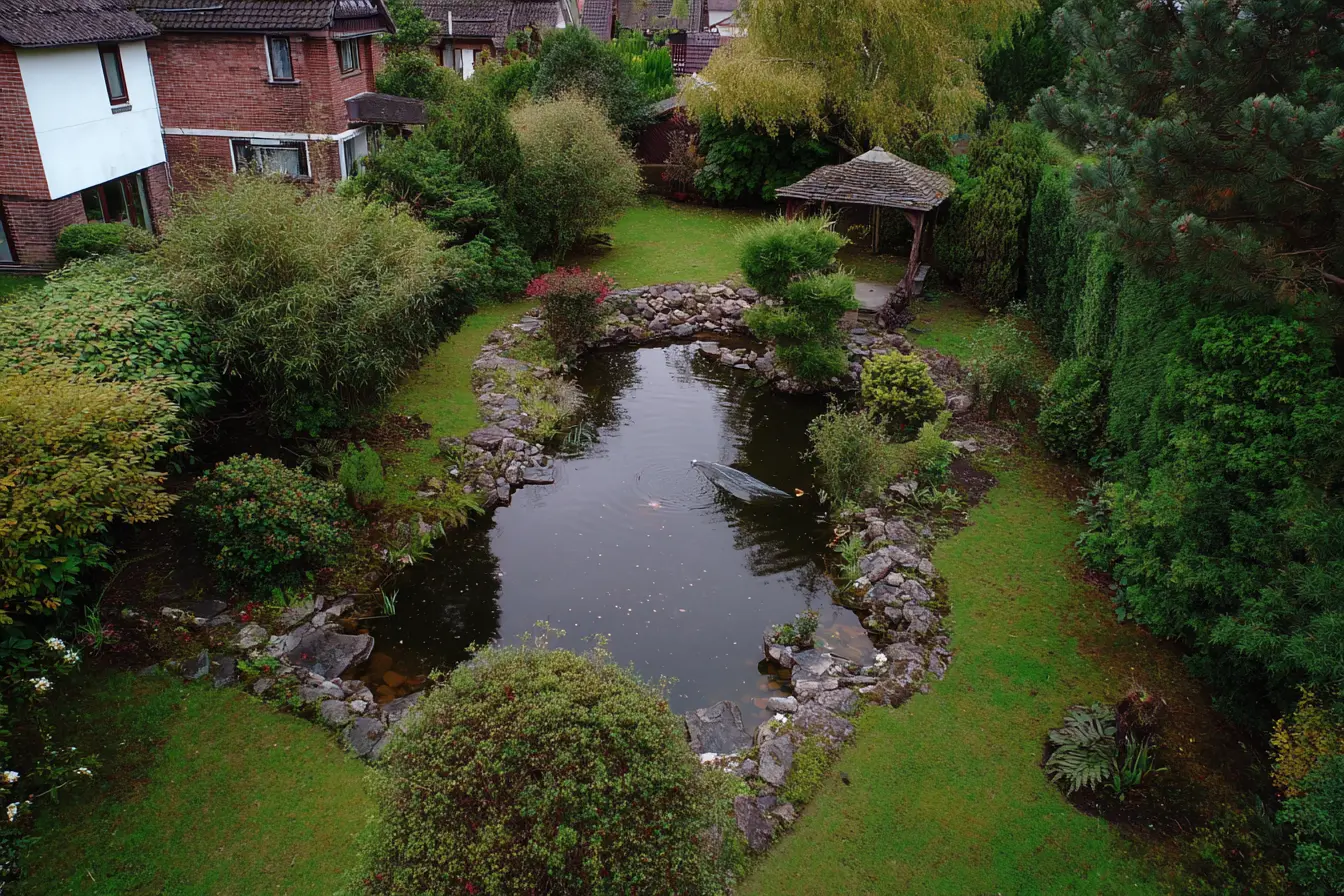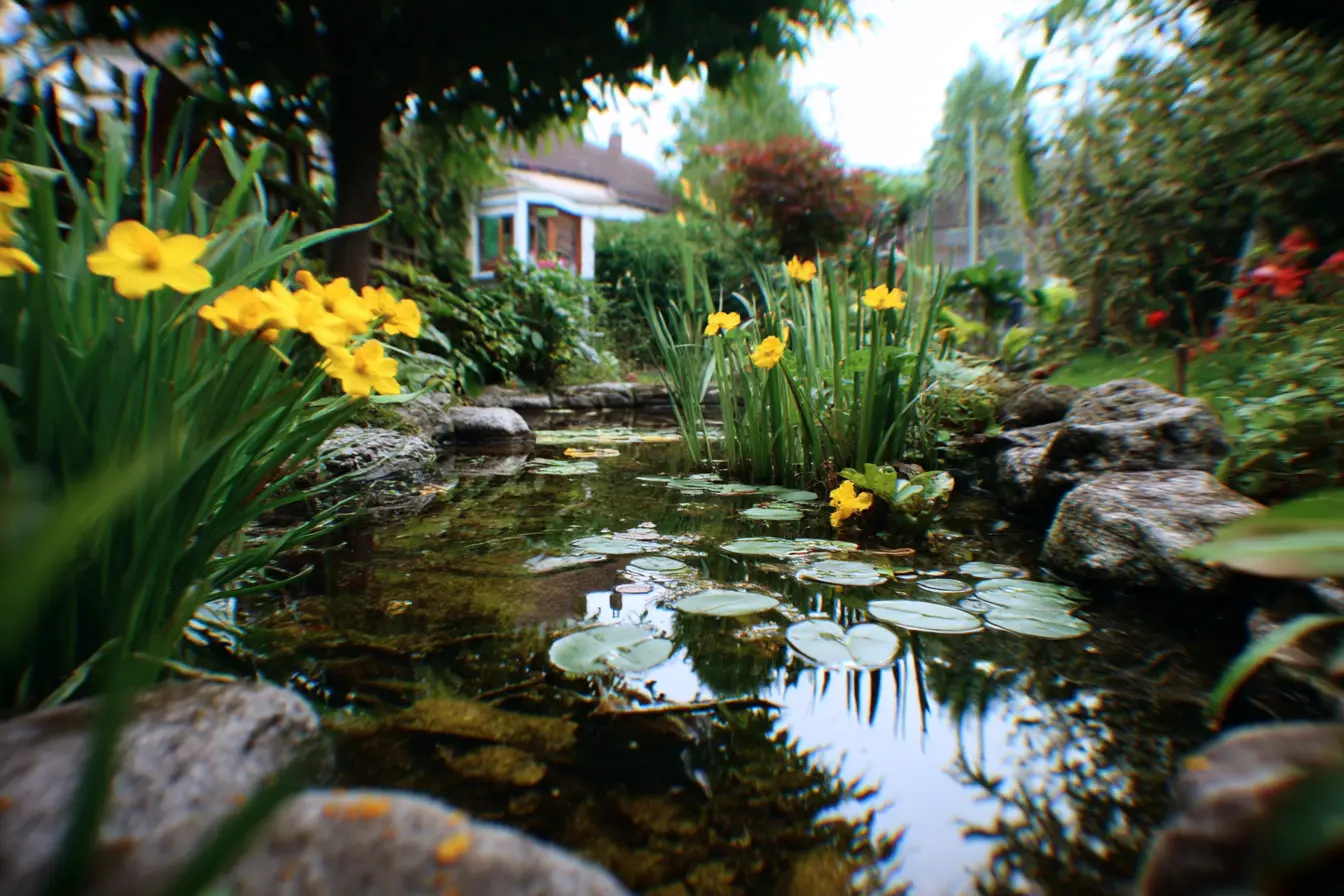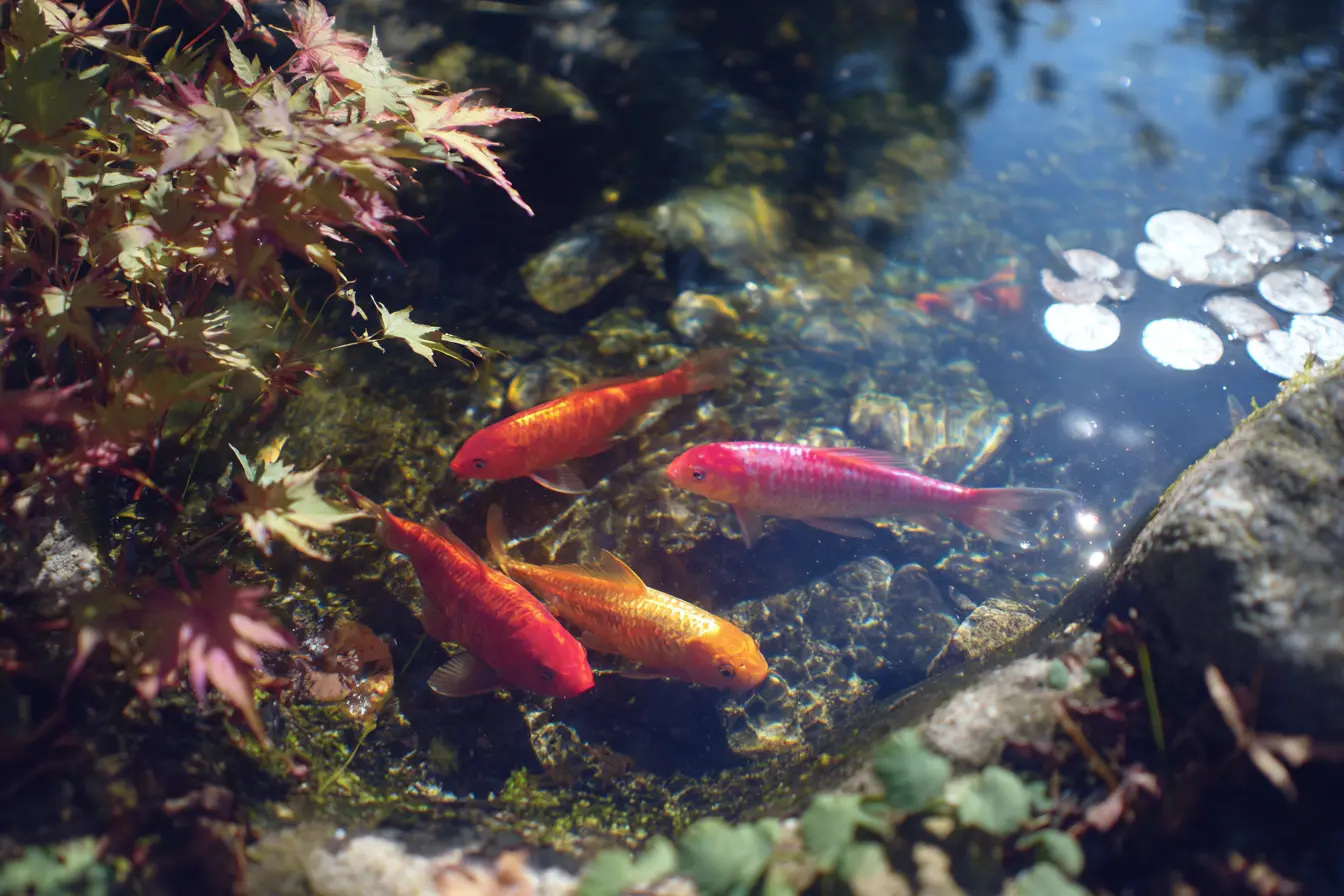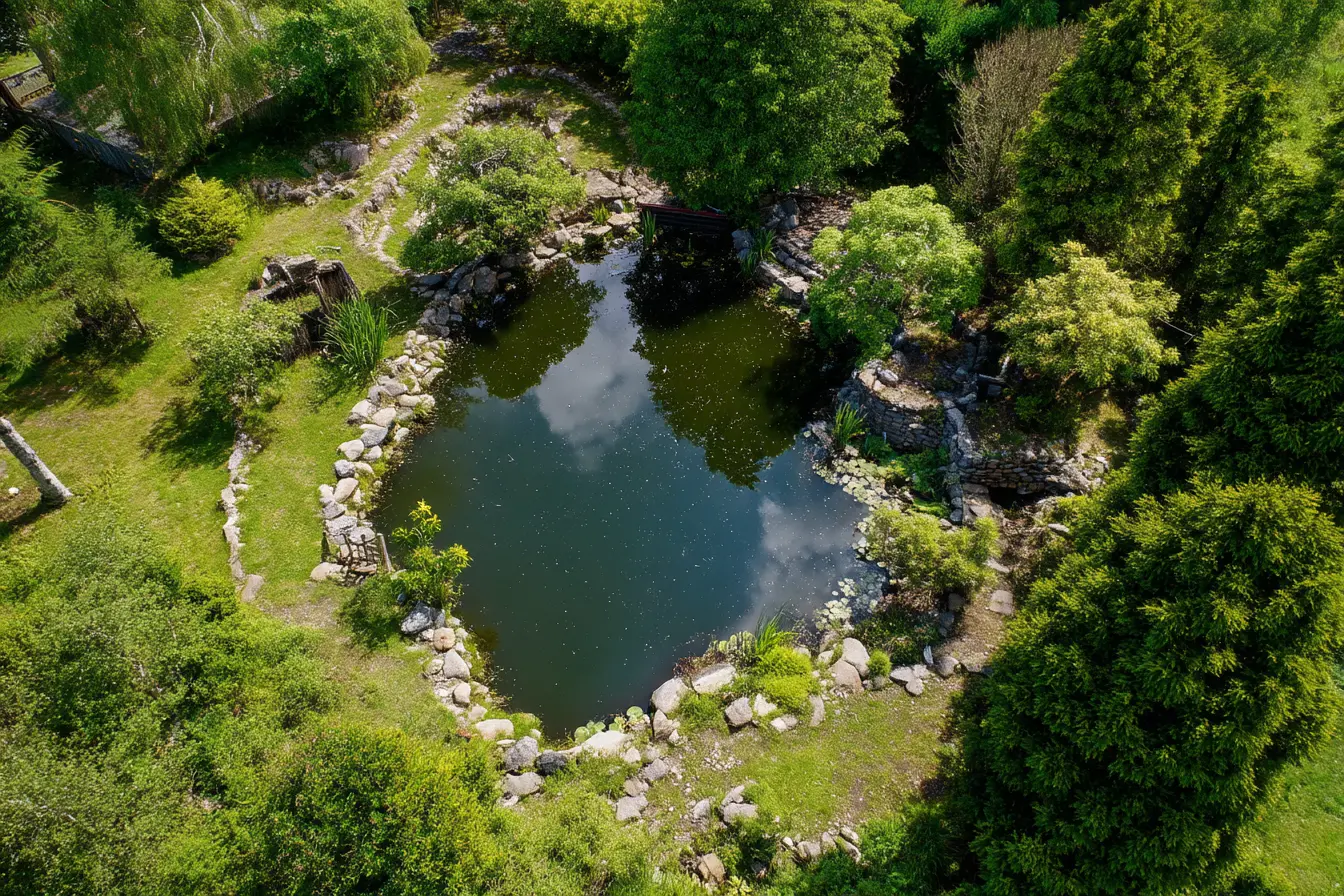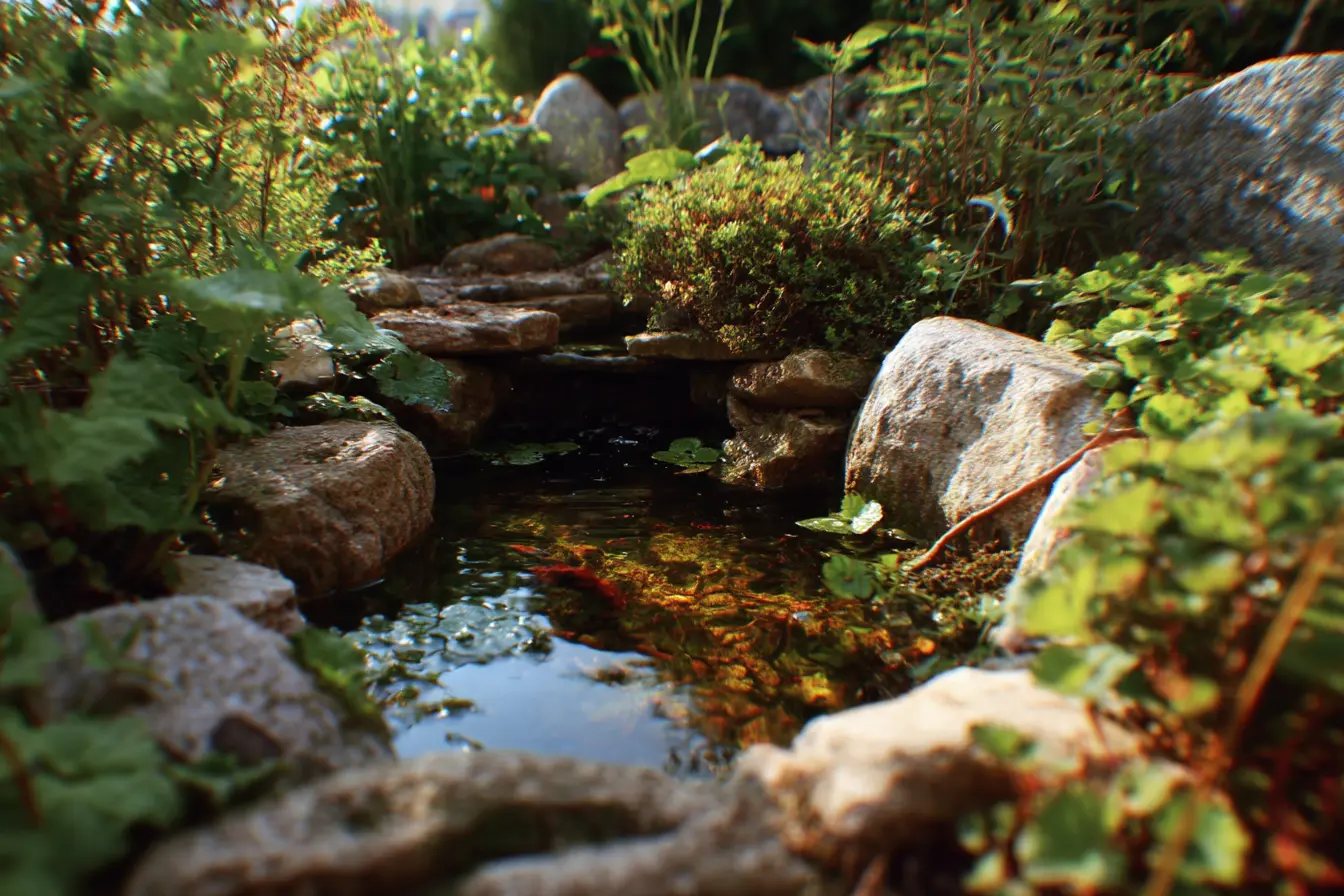
The Ultimate Guide to Pond Maintenance
A well-maintained pond is a beautiful and rewarding feature that brings life and serenity to any garden. However, without regular care, ponds can quickly become murky, overgrown, and unhealthy for fish and plants.
This guide will cover everything you need to know about maintaining a healthy, thriving pond throughout the year.
Why Pond Maintenance Is Essential
Regular pond maintenance ensures:
- Clear, clean water
- Healthy fish and aquatic plants
- Control of algae and invasive weeds
- Prevention of leaks and equipment failures
- A balanced ecosystem that attracts wildlife
Neglecting maintenance can lead to a host of problems, including foul smells, dying fish, and an unattractive garden feature.
Key Aspects of Pond Maintenance
Monitoring Water Quality
Water quality is crucial for the health of your pond's ecosystem.
Essential Checks
- pH Levels: Should be between 6.5 and 8.5
- Ammonia and Nitrite: Should be as close to zero as possible
- Oxygen Levels: Aeration might be necessary, especially in hot weather
- Hardness and Alkalinity: Important for stable water chemistry
Testing kits are readily available and should be used monthly or after heavy rainfall.
Controlling Algae
Algae is a natural part of a pond ecosystem but too much can cause problems.
Types of Algae
- Green Water Algae: Turns the water pea-soup green
- String Algae (Blanket Weed): Forms long strands
Methods to Control Algae
- Introduce aquatic plants: Water lilies and marginal plants provide shade and compete for nutrients
- Use UV Clarifiers: Kills algae suspended in water
- Manually remove string algae: Use a rake or specialist tools
- Limit nutrients: Avoid overfeeding fish and keep decaying organic matter to a minimum
Managing Plants
Plants are vital for oxygenating the water and providing shelter.
Key Maintenance Tasks
- Thin out plants: Prevent them from taking over
- Remove dead or dying foliage: Reduces decaying matter
- Repot overcrowded plants: Helps them thrive
- Choose the right balance: Floating, marginal, and oxygenating plants all have a role
Caring for Fish
If your pond contains fish, such as koi or goldfish, their care is a critical part of maintenance.
Important Steps
- Monitor for health issues: Look for signs of disease or distress
- Feed appropriately: More in warmer months, less in winter
- Avoid overstocking: Too many fish can upset the balance
- Protect from predators: Install nets if herons or cats pose a threat
Cleaning the Pond
Over time, sludge and debris will build up at the bottom of the pond.
Cleaning Routine
- Skim debris: Use a net to remove leaves and floating matter weekly
- Vacuum sludge: Pond vacuums are effective for cleaning without disturbing the pond too much
- Partial water changes: Replace 10–20% of the pond water monthly, using dechlorinated water
- Full clean (rare): Only if absolutely necessary, typically every 5–7 years, as it disrupts the ecosystem
Maintaining Equipment
Most ponds rely on pumps, filters, UV clarifiers, and aerators.
Regular Tasks
- Check and clean filters: Usually monthly during peak seasons
- Inspect pumps: Ensure they are running efficiently
- Replace UV bulbs: Generally once per year
- Clear blocked pipes and nozzles: Improves water flow and oxygenation
Seasonal Pond Care
Pond needs vary depending on the time of year.
Spring
- Clean up winter debris
- Restart pumps and filters
- Divide and replant aquatic plants
Summer
- Top up water levels
- Monitor oxygen levels closely
- Shade the pond if temperatures soar
Autumn
- Net the pond to catch falling leaves
- Thin out excess plant growth
- Gradually reduce fish feeding
Winter
- Prevent complete freezing by using a pond heater or floating device
- Stop feeding fish once the water consistently falls below 10°C
- Keep an eye on equipment still running
Common Pond Problems and Solutions
Green Water
- Cause: Excessive algae
- Solution: Use UV clarifier, add more aquatic plants, reduce fish feeding
Fish Gasping for Air
- Cause: Low oxygen levels
- Solution: Increase aeration, reduce organic load
Cloudy Water
- Cause: Disturbance of debris, poor filtration
- Solution: Clean or upgrade filters, carry out partial water changes
Bad Smell
- Cause: Accumulation of decaying organic material
- Solution: Remove debris regularly, vacuum the pond bottom
Tips for a Healthy Pond
- Add a variety of plants to naturally filter and shade the pond
- Avoid chemical treatments unless absolutely necessary
- Choose native species for plants and animals
- Perform small, regular maintenance rather than infrequent big clean-ups
- Monitor and adapt to seasonal changes
Conclusion
Pond maintenance may seem daunting at first, but once established, it becomes a manageable and rewarding routine. Regular attention to water quality, plants, fish, and equipment ensures your pond remains a thriving, attractive feature for years to come.
By following these comprehensive guidelines, you will not only keep your pond clean and healthy but also create a vibrant ecosystem that adds beauty and biodiversity to your garden.
Related Vets
Vets near you
Speciality vets
- Aquatics vet specialists
- Birds vet specialists
- Camelids vet specialists
- Cats vet specialists
- Cattle vet specialists
- Deer vet specialists
- Dogs vet specialists
- Equines vet specialists
- Exotic vet specialists
- Goats vet specialists
- Pigs vet specialists
- Poultry vet specialists
- Sheep vet specialists
- Small Mammals vet specialists
- Wild vet specialists
